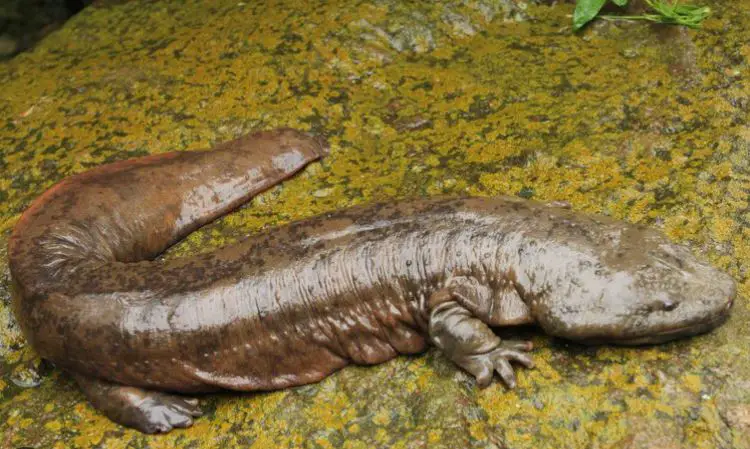The Japanese Giant Salamander is a remarkable amphibian that captivates the imagination with its impressive size and distinct characteristics. In this article, we will explore the world of these fascinating creatures, delving into their physical characteristics, habitat, behavior, diet, and the conservation efforts being made to protect their populations. Join us as we uncover the secrets of the Japanese Giant Salamander and discover why it is an essential and awe-inspiring species in the realm of amphibians.
If you want to read more about amphibians, click here.
Physical Characteristics of Japanese Giant Salamander
The Japanese Giant Salamander is known for its impressive size, making it one of the largest amphibians in the world. We will examine their physical features, including their elongated body, robust limbs, and unique skin texture. Additionally, we will discuss their coloration and the adaptations that make them well-suited for their aquatic lifestyle.
Habitat and Distribution
Japanese Giant Salamanders are primarily found in the clear, cold mountain streams of Japan. We will explore their preferred habitat, including the specific characteristics of the streams they inhabit and the ecological significance of these environments. Additionally, we will touch upon their distribution and the factors that influence their range.
Behavior and Adaptations
The behavior and adaptations of the Japanese Giant Salamander are intriguing and well-adapted to their aquatic habitat. We will delve into their nocturnal nature, their secretive behavior, and the unique sensory adaptations that allow them to navigate their environment. We will also explore their ability to remain motionless for extended periods and their defense mechanisms.
Diet and Feeding Habits
The Japanese Giant Salamander is an opportunistic carnivore, and its diet consists mainly of small aquatic animals. We will discuss their feeding habits, including their hunting techniques and the types of prey they consume. Additionally, we will explore the role of the salamander as an indicator species, reflecting the health of the ecosystems they inhabit.
Reproduction and Lifecycle
The reproductive behavior of Japanese Giant Salamanders is fascinating. We will explore their courtship rituals, the unique features of their breeding cycle, and the incredible maternal care they exhibit. We will also discuss their slow growth rate and the challenges they face in reaching sexual maturity.

Conservation Status and Threats
Despite their awe-inspiring nature, Japanese Giant Salamanders face numerous conservation challenges. We will examine the current conservation status of these salamanders, the threats they encounter, including habitat degradation, pollution, and poaching. Furthermore, we will highlight the efforts being made to protect and preserve their populations through conservation initiatives and the importance of public awareness and education.
Interaction with Humans
Japanese Giant Salamanders have a unique relationship with humans. We will discuss the cultural significance of these amphibians in Japanese folklore and their role as ambassadors for conservation. Additionally, we will explore the opportunities for responsible ecotourism and the importance of maintaining a respectful distance to minimize disturbance to their natural habitat.
Conclusion
The Japanese Giant Salamander is an extraordinary creature that commands our admiration and protection. With its unique characteristics, vital ecological role, and cultural significance, it is crucial to ensure the conservation of these amphibians for future generations. By understanding their habitat requirements, raising awareness about the challenges they face, and implementing effective conservation strategies, we can safeguard the Japanese Giant Salamander and contribute to the preservation of biodiversity.